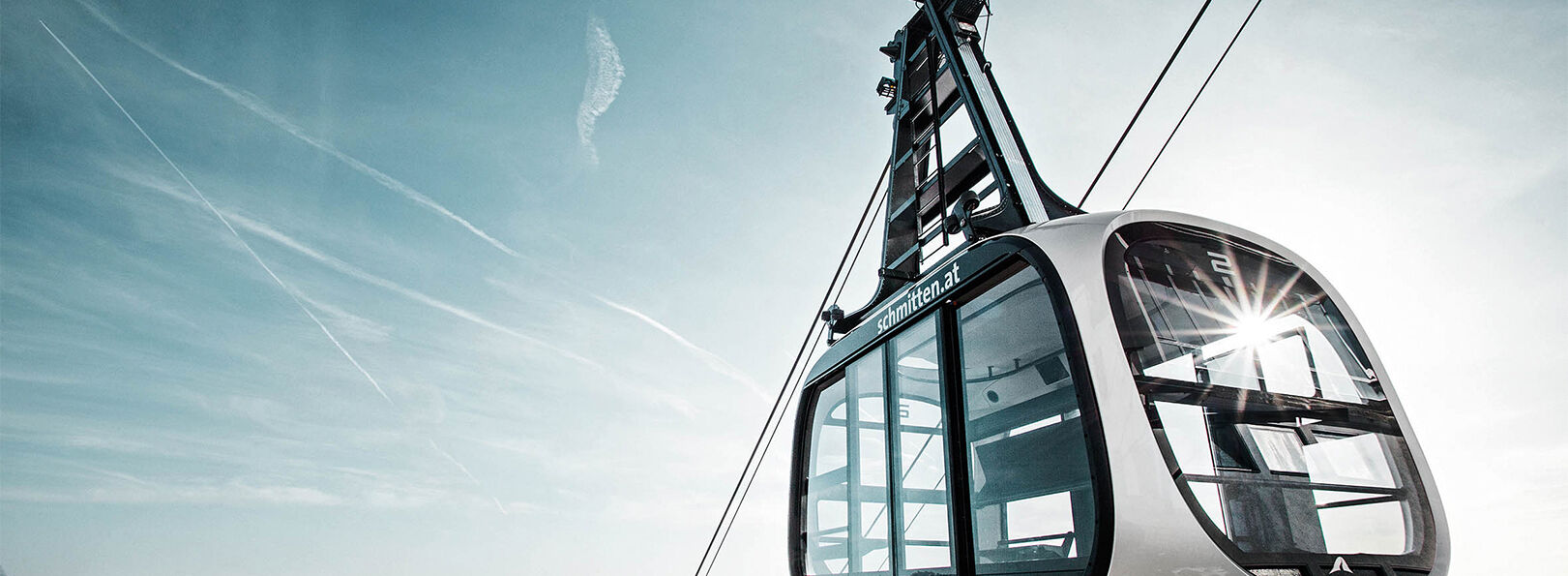| 1999 |
- Expansion of the Intersport Schmittenhöhe service network (incl. Zeller Bergbahn and the Drive-In located at Areitbahn III)
|
| 1998 |
- Hirschkogelbahn is converted into a quad chair lift. Additional snowmaking capability in the area adjacent to the mid-station.
“Gallery on the Slopes II” |
| 1996 |
- Expansion of the Areitbahn with two additional sections (AREITBAHN II/III: gondola lift with 6-person gondolas). This provided a direct lift connection from Schüttdorf up to the Schmittenhöhe. With the new lift completed, a new dining establishment opens at the Breiteck summit terminus
- Permanent Halfpipe on the Glocknerwiese
- Areit snowmaking coverage now extended to an elevation of 1,700 m (Breiteckalm).
|
| 1995 |
- Rejuvenation and renovations to the High Promenade between the Schmittenhöhe and Sonnkogel; Construction of an interactive trail with uniform sign-posting and boards providing fascinating information. Areit Snowmaking Machines: Reliable snow conditions for the “Glocknerwiese”, the “Hirschkogel” hill, connecting trails and the “Schütt” run – taking into account the snowmaking capacity of Zell am See, some 65 hectares are now covered by snowmakers. “Gallery on the Slopes” with ten artworks by renowned sculptors displayed on the slopes of the Sonnkogel and Sonnenalm.
|
| 1994 |
- Introduction of the Skidata 350 ticket system featuring the KeyWatch, KeyCard etc.
|
| 1989/90 |
- Expansion of snowmaking on the “North”, “Standard” and “Trass” hills – total of 38 hectares now serviceable by snowmakers.
|
| 1988 |
- Since their existence, the 26 lifts – servicing 70 km of slopes – have transported more than 130 million people. New construction of the AREITBAHN and GLOCKNERBAHN: at a cost of 180 million schillings, the Areitbahn is converted into a gondola lift with 6-person gondolas, while the Glocknerbahn becomes a detachable quad chair lift. In the process, great attention is paid to the environment and to blending harmoniously with the surrounding countryside. Through construction of expanded snowmaking capability, now servicing some 17 hectares, snowmaking also becomes possible on the “Standard” and “Trass” hills, on the slalom run and the Schmittental ski trail, thus guaranteeing quality skiing all the way down to the valley floor. The cost is around 43 million schillings.
|
| 1987 |
- 60-year anniversary of the Schmittenhöhe lift, having now carried more than 12.5 million people since its opening.
|
| 1984 |
- New construction of the Sonnkogel lift, now a detachable triple chair lift; addition of a mountain restaurant
|
| 1982 |
- Building of the new Ketting lift and the Schmiedhof lift; conversion of the Breiteckbahn.
|
| 1981 |
- Building of the Sonnengrat lift and the Edelweiss lift
|
| 1980 |
- Construction of the new Fallegg lift
|
| 1979 |
- Construction of the summit lift, a 3-person chair lift
|
| 1978 |
- Completion of conversions to the SONNENALMBAHN; Construction of the Enzian lift.
|
| 1977 |
- The ZELLER BERGBAHN commences operations, running from the town centre to the mid-station. Construction of the Sonnengratbahn.
|
| 1973/74 |
- Building of the Breiteck lift
|
| 1971/72 |
- Building of the Hirschkogelbahn, the Bruckberg lift and the Hahnkopf lift.
|
| 1970/71 |
- A second route up to the Schmittenhöhe comes to fruition through construction of the AREITBAHN (double chair lift) and its connecting lift, the “Glocknerlift”; construction of the Schüttlift.
|
| 1969/70 |
- Building of the East Face lift
|
| 1969 |
- Building of the Hochmais lift, as well as construction of the Hochmais and East Face ski slopes.
|
| 1965 |
- Building of the Ebenberg lift
|
| 1961 |
- Building of the “Chapel” and Fallegg lift
|
| 1958 |
- Building of the Ketting Lift
|
| 1957 |
- Opening of the SONNENALMBAHN
|
| 1951 |
- Construction of a “Bunny Lift” by the base terminus
|
| 1946/47 |
- Construction of a ski lift on the Breiteckalm (opened March 1947)
|
| 1927 |
- Groundbreaking for the base terminus of the Schmittenhöhe Lift. December 31st: The SCHMITTENHÖHEBAHN officially goes into operation, making it the first cable lift in Salzburg and only the fifth in Austria.
|
| 1926 |
- Autumn: Presentation of a polished project proposal to the provincial governor, Dr. Franz Rehrl; the trio now became a sextet with the additional support of banker Carl Spängler Jr., hotelier Willi Schandlbauer, as well as the former mayor, Josef Wisgrill. October 18th: First public presentation of the project
|
| 1924 |
- October 30th: The efforts of Dr. Bittner, Dr. Margreiter, Leo Gastgeber (with the support of the mayor, Josef Ernst) pay off, as they are awarded a preliminary concession for construction of a cable lift.
|
| 1919 |
- Renewed upswing in the region due to increasing popularity of winter sports.
|
| 1906 |
- February 19th: First winter sports festival in Zell am See with a long-distance downhill ski race from the Schmittenhöhe.
|
| 1904/05 |
- Carl Haschke, owner of the summit hotel, builds the Elisabeth Chapel as a memorial to the Empress Elisabeth, who had been murdered in Geneva in 1898.
|
| 1902/03 |
- Dr. Pircher, along with a small group of other enthusiasts, brings the sport of skiing to Zell am See; the two-pole prevails over the one-pole technique.
|





